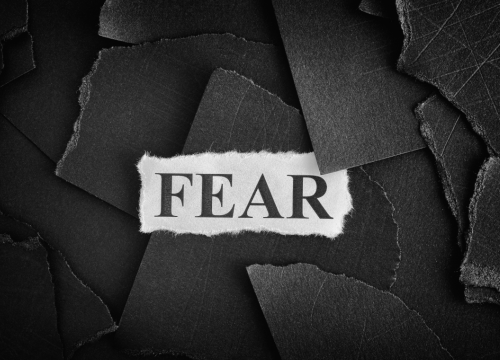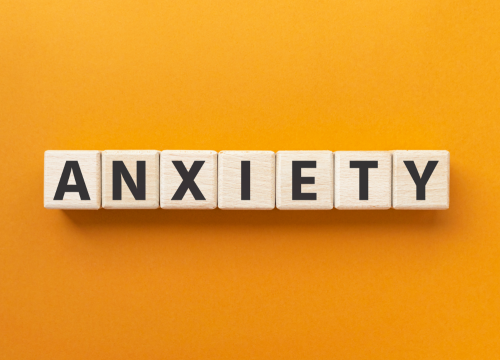Difference Between Fear and Anxiety
Fear is a natural body response to a recognized threat. Fear has a small life, and it occurs in response to a definite entity like an environmental threat. Anxiety is a feeling of apprehension or uneasiness about an unidentified, unknown threat. Anxiety tends to emerge from the perception of your mind regarding the worst possible scenarios that can happen in a given timeframe.

What is fear?
Definition:
Fear is a natural body response to a recognized threat. Fear has a small life, and it occurs in response to a definite entity like an environmental threat.
Characteristics:
Fear is a feeling that precipitates when an immediate danger is identified. It has a short life, and it withers off once the trigger disappears.
Symptoms:
Symptoms of fear include shaking, palpitations, and tremors. Fear has a prominent fight-and-flight response in which you either feel like running away from the scene or fighting back with the opponent. There may be clenched fists, goosebumps, and verbal outpours involved. Sometimes you may have an inability to mobilise or speak that is freezing up.
Treatment:
Treatment of fear involves cognitive behavioral therapy (CBT) and exposure therapy. CBT is a talking therapy in which the therapist addresses the triggers of fears and anxiety and helps diffuse their intensity. Exposure therapy involves engagement in activities that you might be afraid of doing. This also helps to minimize the feelings of fear.

What is anxiety?
Definition:
Anxiety is a feeling of apprehension or uneasiness about an unidentified, unknown threat. Anxiety tends to emerge from the perception of your mind regarding the worst possible scenarios that can happen in a given timeframe.
Characteristics:
Anxiety differs from fear as it is a general long-term feeling of uneasiness about future events. It occurs in response to an indefinite, unidentified threat.
Symptoms:
Symptoms of anxiety include heart racing, shortness of breath, tremors, sweating, and dry mouth. You may feel like having a panic attack. Obsessive and compulsive behaviors have been linked to anxiety. An anxious person may have excessive worries and thoughts despite being in safe surroundings. They tend to avoid situations, people, and places that can aggravate their anxiety.
Treatment:
Anxiety is managed by CBT, exposure therapy, and relaxation techniques. If it is not controlled, then psychotherapy like antianxiety medicines (benzodiazepines and beta blockers) are given.
Difference Between Fear and Anxiety
Definition:
Fear is a natural body response to a recognized threat. Fear has a small life, and it occurs in response to a definite entity like an environmental threat. Anxiety is a feeling of apprehension or uneasiness about an unidentified, unknown threat. Anxiety tends to emerge from the perception of your mind regarding the worst possible scenarios that can happen in a given timeframe.
Characteristics:
Fear is a feeling that precipitates when an immediate danger is identified. It has a short life, and it withers off once the trigger disappears.
Anxiety differs from fear as it is a general long-term feeling of uneasiness about future events. It occurs in response to an indefinite, unidentified threat.
Symptoms:
Symptoms of fear include shaking, palpitations, and tremors. Fear has a prominent fight-and-flight response in which you either feel like running away from the scene or fighting back with the opponent. There may be clenched fists, goosebumps, and verbal outpours involved. Sometimes you may have an inability to mobilize or speak that is freezing up.
Symptoms of anxiety include heart racing, shortness of breath, tremors, sweating, and dry mouth. You may feel like having a panic attack. Obsessive and compulsive behaviors have been linked to anxiety. An anxious person may have excessive worries and thoughts despite being in safe surroundings. They tend to avoid situations, people, and places that can aggravate their anxiety.
Treatment:
Treatment of fear involves cognitive behavioral therapy (CBT) and exposure therapy. CBT is a talking therapy in which the therapist addresses the triggers of fears and anxiety and helps diffuse their intensity. Exposure therapy involves engagement in activities that you might be afraid of doing. This also helps to minimize the feelings of fear.
Anxiety is managed by CBT, exposure therapy, and relaxation techniques. If it is not controlled, then psychotherapy like antianxiety medicines (benzodiazepines and beta blockers) are given.
Table of difference Between Fear and Anxiety

FAQs
How is phobia different from anxiety?
Phobias are extensive fear or dislike towards a specific entity. Anxiety is a feeling of apprehension or uneasiness about an unidentified, unknown threat.
What are the 3 3 3 rules for anxiety?
In cases of anxiety name 3 things you can see, move 3 parts of your body, and identify three sounds nearby.
What is an example of fear and anxiety?
Being afraid to see an injury is a form of fear. Uneasiness before appearing for an exam is an example of anxiety.
Can you feel anxiety without fear?
Yes.
What is the root cause of fear?
It is the natural neurophysiological response of the body to an undesired stimulus.
What are the 3 causes of fear?
Seeing a death, injury, and bad personal experiences are a few causes of fear.
How to get rid of fear?
Treatment of fear involves cognitive behavioral therapy (CBT) and exposure therapy. CBT is a talking therapy in which the therapist addresses the triggers of fears and anxiety and helps diffuse their intensity. Exposure therapy involves engagement in activities that you might be afraid of doing. This also helps to minimize the feelings of fear.
What does fear feel like?
Symptoms of fear include shaking, palpitations, and tremors. Fear has a prominent fight-and-flight response in which you either feel like running away from the scene or fighting back with the opponent. There may be clenched fists, goosebumps, and verbal outpour involved. Sometimes you may have an inability to mobilise or speak that is freezing up.
What is the most common fear?
Social phobias are one of the most common fears.
- Difference Between Fear and Anxiety - April 2, 2024
- Difference Between Climate Change and Global Warming - April 2, 2024
- Difference Between CT Scan and MRI Scan - February 18, 2024
Search DifferenceBetween.net :
6 Comments
Trackbacks
- Difference Between Ginseng and Caffeine | Difference Between | Ginseng vs Caffeine
- Difference Between Indica and Sativa | Difference Between | Indica vs Sativa
- Difference Between Ensure and Insure | Difference Between | Ensure vs Insure
- Difference Between Leader and Boss | Difference Between | Leader vs Boss
Leave a Response
References :
[0]Steimer, Thierry. "The biology of fear-and anxiety-related behaviors." Dialogues in clinical neuroscience 4.3 (2002): 231-249.
[1]Öhman, Arne. "Fear and anxiety." Handbook of emotions (2008): 709-729.
[2]Image credit: https://www.canva.com/photos/MAEm32CbGlM-anxiety-text-made-of-wooden-blocks-on-orange-background/
[3]Image credit: https://www.canva.com/photos/MADGDjiD5xU-fear-torn-pieces-of-black-paper-and-word-fear/

I am really inspired together with your writing abilities and also with the layout
for your blog. Is this a paid theme or did you modify it
yourself? Either way stay up the nice high quality writing, it is uncommon to see a nice blog like
this one these days..
I m studying in Meenakshi college of nursing. And I m a nursing student..